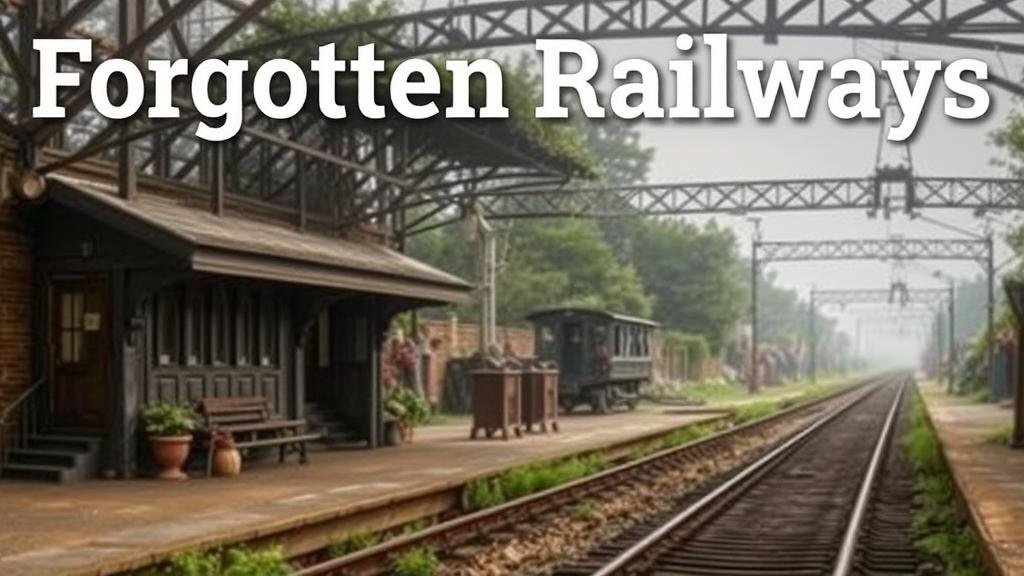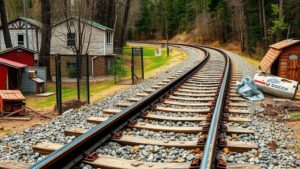Forgotten Railways: Uncovering Trackside Relics from Early Transport Hubs
Forgotten Railways: Uncovering Trackside Relics from Early Transport Hubs
The history of rail transport is rich and varied, illustrating the profound impact of railway systems on the development of communities and economies. But, many of these early transport hubs, once bustling with activity, have faded into obscurity. This research article examines the remnants of forgotten railways, emphasizing their significance in understanding regional development, technology, and heritage. By focusing on specific case studies, we aim to uncover the stories behind these historical locales and evaluate their contributions to modern transportation systems.
The Evolution of Railways in the 19th Century
Railways began to gain popularity in the early 19th century, with the opening of the Stockton and Darlington Railway in England on September 27, 1825. This groundbreaking event marked the inception of freight and passenger transport via steam locomotives on a large scale. By the mid-1800s, railway networks expanded rapidly across Europe and North America, facilitating industrial growth and urbanization.
Case Study: The New York Central Railroad
Established in 1853, the New York Central Railroad became one of the most significant transportation systems in the United States, connecting major cities like New York, Buffalo, and Chicago. railroad network helped spur economic growth, with transportation costs dropping as much as 95% compared to earlier methods. But, as transportation evolved–especially with the rise of automobiles and air travel–many sections of the railway fell into disuse, leading to the preservation of various trackside relics.
Trackside Relics: A Window into the Past
Trackside relics encompass a wide variety of artifacts, from old depot buildings to abandoned rail cars. These remnants hold valuable information regarding the engineering practices of their times, as well as insights into the social and economic conditions of communities they served.
Important Relics and Their Significance
- Abandoned Train Depots: Many small towns in the United States, such as the former Illinois Central Depot in Waterloo, have preserved their old train stations. e buildings provide a physical representation of the transport hubs that once enabled growth and migration.
- Locomotive Remains: In places like the historic route of the Central Pacific Railroad in California, one can find relics of early steam locomotives–remnants that tell stories of engineering challenges and transport solutions encountered during the construction of the transcontinental railroad.
- Track Layouts: The remains of rail tracks, often overgrown yet still visible, illustrate the expanding networks of railroads. Sites such as the Grand Trunk Railway in Michigan utilized legacy tracks for educational purposes and as walking trails, balancing preservation with public interest.
Archaeological Importance of Forgotten Railways
Archaeological studies of old railways reveal much about technological advancements and labor histories. For example, researchers in the UK have analyzed the remnants of trains to understand the materials and methods used in building and maintaining locomotives. e analyses contribute to our knowledge of industrial capabilities during different historical periods.
Challenges in Preservation
Preserving trackside relics presents several challenges, including environmental degradation and urban development pressures. Also, the financial resources required for preservation often exceed available funding. For example, many historical railroads have been subsumed by urban sprawl, leaving local communities to advocate for safeguarding their railway heritage.
Real-World Applications and Community Engagement
Modern initiatives increasingly recognize the significance of forgotten railways. Community projects often focus on converting abandoned railroads into trails, promoting ecological conservation and outdoor recreation, thereby demonstrating the versatility of rail corridors beyond their original function.
Examples of Community Projects
- The Rails-to-Trails Conservancy: This nonprofit organization advocates for turning abandoned railway corridors into pedestrian and cycling paths. As of 2023, over 24,000 miles of rail trails have been established across the United States.
- Local Heritage Programs: Communities, such as those in Colorado Springs, have developed heritage trails that highlight historical rail sites, encouraging tourism and educational opportunities related to local transportation history.
Conclusion
The trackside relics of forgotten railways provide a unique perspective on local history, technological progress, and community development. These sites are invaluable resources for understanding the implications of early transport systems on modern infrastructure. By continuing to explore and preserve these remnants, we not only honor the legacy of past innovations but also engage communities in their history and potential for future use.
Ultimately, forgetting the lessons of the past might deprive future generations of understanding how transportation shaped their communities. By fostering a sense of stewardship over forgotten railways, we can ensure that these narratives remain alive.



